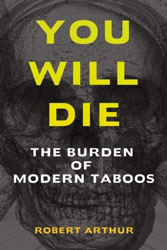Posted: July 15th, 2009 | Filed under: alcohol, DEA, drugs, heroin, history, opiates | 4 Comments »

In 1973 President Richard Nixon created the Drug Enforcement Administration (DEA) claiming there was a junkie explosion with eight times as many heroin addicts as two years earlier (a lie), and that drugs were “decimating a generation of Americans.” At the time, far more Americans were dying from choking on food or falling down stairs. (Baum, pp. 12, 28)
In reality, Nixon saw the DEA as a jurisdiction-free police force that would indirectly target blacks saying, “You have to face the fact that the whole problem is really the blacks. The key is to devise a system that recognizes this all while not appearing to.” (Baum, p. 13)
An assistant to Egil Krogh, a member of Nixon’s administration imprisoned in the Watergate scandal, explained, “If we hyped the drug problem into a national crisis, we knew that Congress would give us anything we asked for.” (Epstein, p. 140)
While president, Nixon would get drunk and pop pills from his private stash. He never had himself arrested.
Nixon’s statistical deceit regarding heroin addict numbers is explained in Agency of Fear: Opiates and Political Power in America. (pp. 174-177) When Nixon later wanted to show his War on Drugs was working the addict population was magically sliced by 25%.
The Nixon quotes are from Dan Baum’s Smoke and Mirrors: The War on Drugs and the Politics of Failure. Baum took the “blacks” quote from the diary of Nixon’s Chief of Staff, H.R. Haldeman. Another quote in Haldeman’s diary was that Nixon wanted to know “why all the Jews seem to be the ones that are for liberalizing the regulations on marijuana.” (p. 54)
Nixon’s generous use of drugs – prescribed and not prescribed (Dilantin) – and alcohol is detailed in Anthony Summers’ The Arrogance of Power: The Secret World of Richard Nixon.
* This post was updated on May 30, 2012.
Sources:
1. Robert Arthur, You Will Die: The Burden of Modern Taboos (2008).
2. Dan Baum, Smoke and Mirrors: The War on Drugs and the Politics of Failure (1996).
3. Edward Jay Epstein, Agency of Fear: Opiates and Political Power in America (1977).
4. Anthony Summers, The Arrogance of Power: The Secret World of Richard Nixon (2000).
Posted: July 11th, 2009 | Filed under: DEA, drugs, ecstasy, legalization, media bias | 2 Comments »

The biochemist, Alexander Shulgin, first reported MDMA’s beneficial effects in a journal article in 1978. MDMA, or ecstasy, creates empathy in its users and has exhibited great potential as a psychotherapy tool. Shulgin himself enjoyed using it to loosen up and relate to others at social gatherings.
Despite the fact psychologists and psychiatrists championed its value in therapy, when young adults started using it as a club drug in the 1980s the DEA made it a Schedule I Drug. This classification is supposed to be restricted to drugs with high abuse potential and no acceptable medical uses. [MDMA has no addiction potential. (Gahlinger, p. 338)] A DEA pharmacologist has admitted the DEA wasn’t even aware psychiatrists were using MDMA for treatment. In other words, they did not bother to research the drug before deciding to throw adults in prison for its possession.
The mass media proceeded to jump on the “all recreational drugs are evil” bandwagon by portraying ecstasy as a drug that leads kids to crazy casual sex and death. MDMA causes empathy not increased libido. The fallacy of it being a sex drug is obvious for many men as Cooder notes in the above cartoon. For the gross exagerration of its deadliness see the previous post, “Deadly Nuts: If Peanuts Were Portrayed Like E.”
As Jacob Sullum wrote in Saying Yes, “Like LSD, [MDMA] became illegal because too many people started to enjoy it.” (Sullum, p. 171)
To preempt MDMA destroys your brain comments, here is a link to Shulgin’s response and a 2006 journal article link disproving the brain damage theories.
Request for Positive Drug Stories
If you have a positive drug story that is either unique, humorous, or interesting; and are willing to have it told through illustrations please contact me at rob@suburra.com. Anonymity is respected.
Sources:
1. Paul Gahlinger, Illegal Drugs (2001).
2. Jacob Sullum, Saying Yes (2003).
Posted: May 31st, 2009 | Filed under: cocaine, drugs, media bias | 3 Comments »

Our government and the mainstream media implicitly and explicitly justify the war on drugs by perpetuating the myth that drugs are extremely deadly. Illegal drugs do kill (just like ladders, cars, and swimming pools kill) but (1) most of the fatalities stem from the criminalization that forces drugs into the black market (see heroin example at this post), and (2) even this risk is greatly exaggerated.
For example, the deadliness of cocaine and Aspirin are in fact comparable. A survey of intranasal cocaine administrations during surgery (in amounts comparable to recreational use) found it to be fatal .005% of the time. A study found that non-steroidal anti-inflammatory drugs, e.g. Aspirin, Ibuprofen, Aleve, will be fatal to .08% of patients taking them for at least two months.
Critics will point out that these are two different metrics that do not provide proper comparison (two months of usage vs. one administration). My response is that (1) these are the only metrics available and (2) my point is not to establish one is safer than the other but to show that – contrary to popular perception – their deadliness is similar.
To see how cocaine fatality statistics are inflated go to “Billy Mays’ Corpse Gets Trampled by Cocaine Hype.”
Sources:
1. Robert Arthur, You Will Die: The Burden of Modern Taboos (2008), p. 333.
2. Martin Tramer, et al., “Quantitative Estimation of Rare Adverse Events Which Follow A Biological Progression: A New Model Applied to Chronic NSAID Use,” Pain, 2000, 85:169-182.
3. Linda Wong & Bruce Alexander, “‘Cocaine-Related’ Deaths,” Journal of Drug Issues, Winter 1991.





